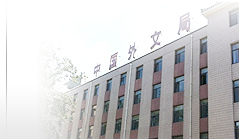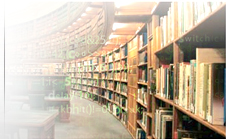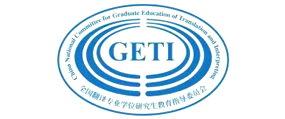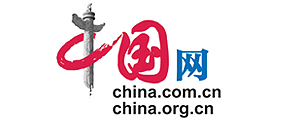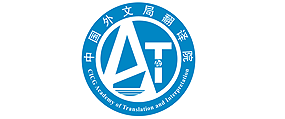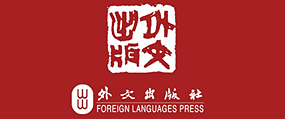理论研究 /
5 试论归化和异化的生成动因与三个层面 冯全功14 翻译的澄明:重思“诗歌不可译”论 汤富华
生态翻译研究专栏 /
24 翻译研究“生态范式”的理论建构 胡庚申34 翻译研究中的问题域转换:生态翻译学视角 罗迪江
42 论生态翻译学在中西翻译研究中的学术定位 孟凡君
译史纵横 /
50 诗学的钳制:苏曼殊文学翻译变脸考辨 黄元军59 翻译律令“译讯人诈伪”的历史变迁及其启示 冉诗洋 李德凤
译介研究 /
66 “文化运动之第二步”:《东方杂志》(1920-1948)的文学译介 侯杰翻译教学 /
75 CATTI证书嵌入式翻译专业人才培养模式改革研究——以四川外国语大学为例 祝朝伟 杨志亭82 翻译硕士学位论文模式探究 孙三军 任文
书刊评介 /
91 西方自译研究新视野——《自译与权力:欧洲多语语境下的身份协商》介评 罗金学术访谈 /
99 京剧剧本翻译实践与思考——夏威夷大学魏莉莎教授访谈录 黄庆欢译家研究 /
104 翻译家的选择与坚守——杜特莱译介中国当代文学之路 刘云虹业界视点 /
111 深化改革 探讨创新 推进发展——全国翻译专业学位研究生教育2019年会综述 赵军峰 姚恺璇行业研究 /
117 普惠金融视角下小微语言服务企业的融资途径分析 钱芳翻译技术 /
126 人工智能驱动下的众包翻译技术架构展望 邵璐翻译评论 /
135 《文心雕龙》英译的陌生化策略分析——以宇文所安英译本为例 胡作友 刘梦杰学术争鸣 /
143 道学心论对深度翻译理论缺陷的补苴 吴冰 朱健平实践探索 /
150 对重要政治文献翻译的几点思考 张颖156 体认语言学视野下的汉语成语英译——基于《红楼梦》三个英译本的对比研究 王寅
翻译工作坊 /
165 武术翻译中的理解与表达——以八卦掌英译为例 吴文安自学之友 /
170 Family Skeleton (Richard King) 周领顺 译173 意译:文学性增强的有效途径 周领顺
178 我过的端阳节(徐志摩) 蔡力坚 译
181 翻译中的词语搭配 蔡力坚
词语选译 /
184 重要时政词语表述汉英选译英文摘要 /
信息广角 /
191 新中国翻译事业70年论坛暨2019中国翻译协会年会二号公告信息广角 /
本期主要论文摘要
* 理论研究
试论归化和异化的生成动因与三个层面
冯全功 浙江大学
冯全功 浙江大学
摘要:学界对归化和异化的认识还有一定的模糊性,需要对之进行重新思考。本文提出,文化差异,具体包括语言、诗学、意象、思维等多个方面的差异,是归化和异化的生成动因,没有文化差异,就没有归化和异化的存在。归化和异化可分为三个层面:句子上的方法层面,语篇上的策略层面和对待异域文化态度上的伦理层面。在理想情况下,三个层面是实现与控制的关系,从方法到策略再到伦理是实现关系,从伦理到策略再到方法是控制关系。
翻译的澄明:重思“诗歌不可译”论
汤富华 武汉纺织大学
汤富华 武汉纺织大学
摘要:翻译研究作为新兴学科目前还没有明确的学科归类,大多数讨论仍没有直面“对等”范畴的主客体对象,以至于“诗歌不可译”貌似成了一个公论。这里面其实包孕了不能译(incapable of translating)与不可译(untranslatability)的层次问题。不能译是语言问题,事关译者的语感,指涉语言经验,而不可译是哲学问题,事关超验。依据实践理性传统,翻译本身的元意义诸问题应适当予以悬挂,而不是大而无当地进行无休止的讨论。假若波德莱尔的“应和”诗学思想及本雅明“可译性”本质论成立,翻译的文本意义对于译者来说是自明的,翻译“对等”的讨论意义也应随之自动消解而减弱为译者的中、外文表达能力的问题。
* 生态翻译研究专栏
翻译研究“生态范式”的理论建构
胡庚申 郑州大学/清华大学
胡庚申 郑州大学/清华大学
摘要:本文以托马斯·库恩的范式概念为出发点,首先从“生态维度”缺失、“文化转向”局限、“两极化”理念弊端、东西方译论发展失衡、旧有理论解释乏力等五个方面,揭示和阐述了20世纪末叶翻译理论研究已初现“范式危机”的迹象;进而从全球性生态学术思潮、泛文化倾向、“多元整合”思维、东西方译论融合趋向、生态学的“元学科”性质等五个方面,预示和促进了翻译研究“生态范式”的兴起。由于“范式危机”必然导致“范式转换”,翻译研究的“生态范式”便应时而生。研究表明,生态范式既是一种顺应,也是一种弥补;既是一种转换,也是一种超越;既是一种“尚和”,也是一种变革;既是一种开疆,也是一种提升。
翻译研究中的问题域转换:生态翻译学视角
罗迪江 郑州大学/广西科技大学
罗迪江 郑州大学/广西科技大学
摘要:翻译研究经历了“语言学转向”与“文化转向”之后,似乎陷入了停滞不前的困境与范式危机的泥潭。随着生态翻译学的兴起,翻译研究发生了新的问题域转换的趋向,其表现为三个方面:基本原则从语言转换的“对等性”转向多维度转换的“适应性”而凸显其生态进路;关注对象从文本的“存在”转向翻译的“共生”展现其生态视界;思维范式从“简单性”转向“复杂性”而揭示其复杂性思维。可以说,生态翻译学视域下的问题域转换既是对西方译论问题域的超越,又是向翻译研究整体性的回归。
论生态翻译学在中西翻译研究中的学术定位
孟凡君 西南大学
孟凡君 西南大学
摘要:自胡庚申教授在世纪之交竖起生态翻译学的旗帜以来,生态翻译学在支持和质疑中孑孑前行。其中对生态翻译学的质疑主要有三方面:1)生态翻译学的命名;2)生态翻译学的体系建构;3)生态翻译学的实际运用。本文拟通过探究生态翻译学在中西翻译研究的定位,试图解答以下问题:一、生态翻译学的正名;二、生态翻译学的理论建构对中西译学传统的继承与超越;三、生态翻译学在世界翻译研究话语体系中的地位。由此作者将阐明:若言生态翻译学的种子是“适应/选择”的进化论原理,那么其根本是翻译适应选择论,其基壤是天人合一的华夏生态文明,其主干是“宏观-中观-微观”理论体系,其枝叶即是国际翻译研究交流平台,那么,其果实将是带有华夏生态智慧的、兼具中西学术会通规范的翻译研究话语体系。
* 译史纵横
诗学的钳制:苏曼殊文学翻译变脸考辨
黄元军 湖南师范大学
摘要:近代文学家、翻译家、高僧苏曼殊以翻译英国浪漫派诗歌和印度文学作品、首译雨果小说《悲惨世界》垂名于中国文学翻译史,但其译作较之于原作的“变脸”致使不少学者以非历史化的视角将其翻译视为反面教材。本文从“诗学钳制、操控翻译”的文化角度出发,以苏译英国浪漫派诗歌和《悲惨世界》为主要研究对象,客观描写了译者如何通过语体和视角改变、“豪杰译”模式对原作风貌进行重塑,论证了译者积极、能动地为顺应译入语主流诗学而采取上述文化翻译之举。古今中外,为译入语主流诗学改写原文的现象有极大共似性,诗学的相异决定了改写的不可避免性,从而也决定了翻译研究中诗学因素的不可忽视性。黄元军 湖南师范大学
翻译律令“译讯人诈伪”的历史变迁及其启示
冉诗洋 长江师范学院/澳门大学 |李德凤 澳门大学
冉诗洋 长江师范学院/澳门大学 |李德凤 澳门大学
摘要:翻译立法行为由来已久,始于秦汉律,最早见于张家山出土汉简《二年律令》的“译讯人诈伪”,两千多年来基本隶属于诈伪律的“证不言情”律,只是译者的称谓和量刑有一定的变化。由于无法判定译者是故意误翻还是翻译能力不足,无法确定翻译对错的标准,无法规定谁来判定翻译对错,所以没有形成规范翻译行为的完备的、成文的翻译法。当今的翻译立法依然存在上述困境,建议从宏观上规范翻译行业企业和翻译人员的准入制度,从微观上确定翻译的行业标准,建立翻译争议的仲裁机制,实现翻译立法。
* 译介研究
“文化运动之第二步”:《东方杂志》(1920-1948)的文学译介
侯杰 淮北师范大学
侯杰 淮北师范大学
摘要:五四运动后,为应对整个文化界激变,《东方杂志》力图转变其文化保守主义态度,努力以“经典化”的翻译为途径,在文学理论译介与经典作品翻译上大力开拓,推进新文化运动向纵深发展,即杂志自我宣称的“文化运动之第二步”。从文化实践看,文学理论译介谋求将新文学批评纳入规范;而经典翻译作品与新文学作品并行刊载,试图以翻译引导创作,树立可资借鉴的范式。《东方杂志》推行这种稳健、开放的文化实践近三十年,取得了良好的效果,在中国现代翻译史上影响深远。
* 翻译教学
CATTI证书嵌入式翻译专业人才培养模式改革研究
——以四川外国语大学为例
祝朝伟 杨志亭 四川外国语大学
——以四川外国语大学为例
祝朝伟 杨志亭 四川外国语大学
摘要:本科翻译专业(BTI)人才培养的职业特性、能力导向和突出问题使其与全国翻译资格(水平)考试证书(CATTI)的有机衔接成为BTI人才培养模式改革的大势所趋。因应这一趋势,课题组进行了翻译专业CATTI证书嵌入式人才培养模式改革。结果发现,改革有助于增强学生的职业意识,提升学生的翻译能力,同时遴选优秀学生实现BTI人才分类培养。该模式对于国内同类院校进行BTI人才培养模式改革具有一定的借鉴意义和实践指导价值。
翻译硕士学位论文模式探究
孙三军 任文 北京外国语大学
孙三军 任文 北京外国语大学
摘要:近年来国内翻译硕士(MTI)专业发展迅速,然而由于MTI专业设置的特殊性、新兴性和专业性,学生在面临学位论文写作,特别是论文选题时,仍然有诸多疑虑和困惑。本文基于MTI教指委所发布的指导性培养方案,以及对国内部分高校MTI学位论文要求的调研,归纳提炼出八种较典型的翻译学位论文模式:实践报告、实习报告、课堂案例分析报告、调研报告、实验报告、个案研究论文、比较研究论文、翻译技术应用研究论文,并对每种论文模式的结构进行了简述。本文认为,MTI学位论文在选题方面应立足翻译实践,要有实际意义,有一定难度,有明确的问题意识,并展现一定的翻译理论素养。
* 书刊评介
西方自译研究新视野
——《自译与权力:欧洲多语语境下的身份协商》介评
罗金 四川大学
——《自译与权力:欧洲多语语境下的身份协商》介评
罗金 四川大学
摘要:《自译与权力:欧洲多语语境下的身份协商》以欧洲不同语言文化间的权力差异为背景,考察自译中的民族与文化身份表征及转换。全书研究范围广阔、理论视野多元,对自译概念进行重新书写与延展,消解了自译中原作与译作二元对立的预设,体现出自译研究由描述性文本分析走向整体历史文化语境考量的权力转向,对于国内自译研究的开展具有启示意义。
* 学术访谈
京剧剧本翻译实践与思考
——夏威夷大学魏莉莎教授访谈录
黄庆欢 浙江大学城市学院
——夏威夷大学魏莉莎教授访谈录
黄庆欢 浙江大学城市学院
摘要:魏莉莎教授主张京剧剧本翻译在准确传达文本含义及文化内涵的基础上应重视唱词及韵白的音乐美、结构上的形式美,才能真正体现中国传统戏曲不同于西方戏剧的独特魅力。京剧翻译对译者的要求高,难度大,她认为解决之道为中外译者组成合作翻译,同时译者应接受一定的京剧表演训练。
* 译家研究
翻译家的选择与坚守
——杜特莱译介中国当代文学之路
刘云虹 南京大学
——杜特莱译介中国当代文学之路
刘云虹 南京大学
摘要:中国文学外译是中国文化走出去的必然途径。在中国文学外译中,翻译家的自主性和创造性工作对译本品质以及文学译介与传播的效果具有决定性作用。在当下的中国文学外译研究中,国内译学界对中国文学在英语世界的译介探讨较多,而对其在英语世界之外的其他地域的译介却明显关注不够。法国著名翻译家、汉学家杜特莱是中国当代文学最重要的法译者之一,对中国当代文学在法语世界乃至全球范围内的传播做出了突出贡献。本文拟从翻译家的选择出发,结合“翻译什么”和“如何翻译”这两个中国文学译介领域的根本性问题,探析杜特莱30多年来致力于译介中国当代文学的发现、选择与坚守之路。
* 业界视点
深化改革 探讨创新 推进发展
——全国翻译专业学位研究生教育2019年会综述
赵军峰 姚恺璇 广东外语外贸大学
——全国翻译专业学位研究生教育2019年会综述
赵军峰 姚恺璇 广东外语外贸大学
摘要:翻译硕士自2007年国务院学位委员会批准设置以来,蓬勃发展,累计招生六万余人。2019年4月28日,全国翻译专业学位研究生教育2019年会在西安召开,本文对2019年年会成果予以综述。
* 行业研究
普惠金融视角下小微语言服务企业的融资途径分析
钱芳 广东外语外贸大学
钱芳 广东外语外贸大学
摘要:普惠金融旨在提升金融服务覆盖率和可及性,将中小企业及低收入人群等被排斥在传统金融体系之外的群体纳入金融服务范围。虽然语言服务行业近年来发展迅速,但是占行业绝大多数的小微企业在发展中也面临融资贵融资难等普遍性难题。本文在分析语言服务行业企业融资困难的现状及原因的基础上,从普惠金融政策入手,结合行业协会的定位与功能,提出面向小微语言服务企业的融资途径,并对语言服务行业提升自身竞争优势、拓宽融资渠道提出相应建议。
* 翻译技术
人工智能驱动下的众包翻译技术架构展望
邵璐 中山大学
邵璐 中山大学
摘要:众包翻译作为数字化、全球化时代诞生的一种全新线上翻译协作模式,在互联网、人工智能技术的推动下迅猛发展。它跨越国家与地域之边界,有效整合大众智慧与社会零散资源,促进翻译产业化、社会化的同时提升其效率。近年来,众包翻译在社会、语言、政治、伦理等领域影响深远,从翻译伦理、翻译定义、翻译评估、翻译技术等多个维度挑战了传统翻译模式。本文结合AI时代背景,探讨众包对传统翻译实践和理论带来的冲击,从译前、译中、译后三个阶段,以架构图的形式系统地勾勒了人工智能技术与众包翻译有机结合的可能方式及潜在机遇,并围绕每个技术切入点分析其具体实施策略,以期对翻译跨学科研究作出有益探索。
* 翻译评论
《文心雕龙》英译的陌生化策略分析
——以宇文所安英译本为例
胡作友 刘梦杰 合肥工业大学
——以宇文所安英译本为例
胡作友 刘梦杰 合肥工业大学
摘要:陌生化理论的目的是变习见为新异,化腐朽为神奇,以增加审美快感。陌生化翻译是文学翻译基本属性的内在要求,其主要手段是异域化和混杂化。宇文所安《文心雕龙》英译本的异域化体现在译文的异域色彩,无论是形象语言还是文论术语,都带有浓浓的中国味;其混杂化体现在异国情调的杂合化翻译,特别表现在引文和赞文的杂合化处理。宇文所安的陌生化翻译并非是将陌生化无限放大,而是将其控制在“不即不离”的稳妥范围内。这样的处理,有利于满足目的语读者的审美期待,丰富目的语语言文化,促进中西文论对话,也为中国典籍英译和中国文化“走出去”战略提供了有益的借鉴和思考。
* 学术争鸣
道学心论对深度翻译理论缺陷的补苴
吴冰 湖南大学/东华理工大学 ┃ 朱健平 湖南大学
吴冰 湖南大学/东华理工大学 ┃ 朱健平 湖南大学
摘要:深度翻译通过添加解释、注释等手段将译文置于丰富的语言文化语境中,使读者能深入了解并尊重他者文化。但其缺陷是,译者在实践中所采取的深度翻译方法可能会因译者主观性的随意发挥或过度操纵而无法达到预期效果。本文试图借用道学心论对深度翻译的这一缺陷进行弥补。研究表明,道学心论关于“虚一而静”和“因顺外物”的主张有助于约束译者在深度翻译中的主观随意性。
* 实践探索
对重要政治文献翻译的几点思考
张颖 北京第二外国语学院
张颖 北京第二外国语学院
摘要:十八大以来,以习近平同志为核心的党中央提出了一系列新理念新思想,相关概念外译广受关注。本文对十九大报告等重要政治文献翻译方法进行研究探索,提出五点思考建议,强调新时代此类文献翻译须超越传统思维,推进理念革新,突出译者沟通弥合中西方在价值观和语言文化差异方面的意识担当和角色效果。
* 实践探索
体认语言学视野下的汉语成语英译
——基于《红楼梦》三个英译本的对比研究
王寅 四川外国语大学
——基于《红楼梦》三个英译本的对比研究
王寅 四川外国语大学
摘要:成语被誉为语言的精华,它形式简练、生动鲜明、寓意深刻、彰显文采,但这也是成语翻译的一大难点。虽有很多学者进行了各类研究,但还有很多缺憾,如未见深入的认知分析。本文依据体认语言学的核心原则“现实——认知——语言”,认为成语可分别基于这三个层面择一(或二)进行翻译。我们以《红楼梦》中300个成语在三个英译本中的翻译实例解释了各层次上的翻译方式,比较汉语成语英译的认知过程及其效果,以期能对翻译实践有所启发。
部分文章英文摘要
The Origination of the Twin Concepts Domestication/Foreignization and the Interplay among Their Three Structural Levels
FENG Quangong (Zhejiang University, Hangzhou, China) p.5
FENG Quangong (Zhejiang University, Hangzhou, China) p.5
Abstract: Despite their façade of familiarity, the concepts of domestication and foreignization in TS remain confused and confusing deep down. This paper holds that cultural differences in languages, poetics, images, thinking and so on are what calls into being this binary opposition. Without cultural differences, the pair of concepts would be meaningless. Domestication and foreignization, furthermore, take place on three levels, namely, the sentential/methodical level, the textual/strategic level, and the ethical level which involves the translator’s attitude toward the foreign culture concerned. The paper further maintains that in an ideal situation, the realization of the ethical dimension is contingent on that of the strategic dimension, and the realization of the strategic dimension is then dependent on that of the methodical dimension, whereas the ethical level controls the strategic level, and the strategic level in turn controls the methodical level.
Keywords: domestication; foreignization; cultural differences; method; strategy; ethic
The Eco-paradigm of Contemporary Translation Studies
HU Gengshen (Zhengzhou University, Zhengzhou, China & Tsinghua Universtiy, Beijing, China) p.24
HU Gengshen (Zhengzhou University, Zhengzhou, China & Tsinghua Universtiy, Beijing, China) p.24
Abstract: Taking as its point of departure Kuhn’s concept of paradigm, this article reexamines those problems that had plunged TS into a crisis at the end of the 20th century, including its lack of an ecological dimension, the limitations of the “cultural turn” it had undergone, the disadvantages of its tendency toward polarization, and the imbalance between the Chinese and the Western theories. Such a crisis in practice inevitably brought about a paradigm shift in translation studies, of which the emerging of the “eco-paradigm” was a result. Riding on the wave of the global trend in ecological studies and drawing also from contemporary cultural theories, the integrative thinking and the deepening interaction between Chinese and Western translation theories, the “eco-paradigm” in the practice of translation has given rise to Eco-Translatology as a distinctive theoretical system in TS.
Keywords: Eco-Translatology; paradigm crisis; paradigm revolution; eco-paradigm
The Constraints of Poetics and the Reshaping of the Original in Su Manshu’s Literary Translation
HUANG Yuanjun (Hunan Normal University, Changsha, China) p.50
Abstract: Su Manshu, an early 20th-century man of letters, translator and monk, occupies a special position in China’s history of literary translation with his pioneering translations of English Romantic poetry, Indian literary works, and even Victor Hugo’s Les Misérables. As a translator, he was wont to change the ST’s linguistic style, literary form and narrative perspective, adopting what is known as the method of “heroic translation.” While such an approach has caused some scholars to set his translation up as a negative example, this paper argues that from a cultural theory-informed perspective, the dominant poetics would necessarily restrain and manipulate translation, and Su’s reshaping of the original must therefore be seen as essentially his dynamic adaption to the target language’s received mode of poetics, justified as an act of cultural translation. By subjecting Su’s renditions of English Romantic poetry and Les Misérables to a close re-examination, the paper further argues that since the poetics governing the production of ST necessarily differs from that governing the production of TT, rewriting in literary translation is unavoidable, and a focus on poetics in translation studies is hence called for.HUANG Yuanjun (Hunan Normal University, Changsha, China) p.50
Keywords: Su Manshu; reshaping in literary translation; poetics; constraint
Literary Translations Published in the Eastern Miscellany and the Second Step of China’s New Culture Movement
HOU Jie (Huaibei Normal University, Huaibei, China) p.66
HOU Jie (Huaibei Normal University, Huaibei, China) p.66
Abstract: In response to the dramatic cultural changes brought about by the May Fourth Movement, the Shanghai-based periodical Eastern Miscellany endeavored to shake off its own cultural conservatism and turn itself into a driving force in the “second step” which the Movement was expected to take. To this end, the magazine paid special attention to publishing translations of canonized foreign works both in literature and in literary criticism, in a bid to introduce Western cultural norms and literary theories to the Chinese public. The publication campaign was launched in 1909 and carried on until 1950. The foreign literary theories thus introduced were meant to shape up new norms for China’s literary criticism, whereas the parallel publication of translated literary works aimed at furnishing a model for domestic literary production. What the Eastern Miscellany had published over a period of four decades bore plentiful fruits and exerted far-reaching influences on the development of translation in modern China.
Keywords: The May Fourth [New Culture] Movement; the Eastern Miscellany; literary translation and introduction; literary criticism
Integrating CATTI with BTI Education: SISU’s Model for Reforming the BTI Program
ZHU Chaowei & YANG Zhiting (Sichuan International Studies University, Chongqing, China) p.75
ZHU Chaowei & YANG Zhiting (Sichuan International Studies University, Chongqing, China) p.75
Abstract: Translation training’s professional orientation, its emphasis on developing the trainees’ competence, as well as the problems that have been plaguing China’s Bachelor of Translation and Interpreting (BTI) education all make it urgently necessary to integrate China Accreditation Test for Translators and Interpreters (CATTI) with BTI education. AS SISU’s efforts to reform its BTI program show, such an integration helps to enhance the students’ professional awareness and upgrade their professional competence. It also enables qualified students to be identified and selected for more advanced training and higher-level professional development.
Keywords: integration; CATTI; BTI; program mode; reform
Types and Structures of the Degree Theses Required of China’s MTI Students
SUN Sanjun & REN Wen (Beijing Foreign Studies University, Beijing, China) p.82
Abstract: Since 2007, the Master of Translation and Interpreting Program (MTI) has been added to the curricula of about 250 Chinese universities. With the rapid expansion of this program, issues concerning the writing of theses required of those enrolled in it have started to surface. This paper conducts a survey of available MTI theses that have been submitted and accepted, and identifies eight structure-based types or sub-genres that satisfy the guidelines issued by the National Committee for MTI Education. These are: translation practice report, internship report, classroom performance assessment report, survey report, experiment report, academically-oriented case study, comparative study, and translation technology-themed study. In addition to conforming to the conventions of one of these structural types, a good MTI thesis tends also to satisfy a number of other requirements. These include: the choice of a topic rooted in translation practice and posing a considerable challenge to write; offering a practically relevant discussion of the chosen topic; being adequately informed with a knowledge of the translation theories; and demonstrating a heightened awareness of existing problems.SUN Sanjun & REN Wen (Beijing Foreign Studies University, Beijing, China) p.82
Keywords: Master of Translation and Interpreting; thesis; thesis topic; thesis types
On Defamiliarization in English Translation of Wenxin Diaolong: With Stephen Owen’s English Version as an Exemplary Case
HU Zuoyou & LIU Mengjie (Hefei University of Technology, Hefei, China) p.135
Abstract: Defamiliarization performs the crucial function of increasing aesthetic pleasure by turning conventionality into novelty, or by metamorphosing something banal into a marvel. As such, it is indispensable to literary translation. Two techniques, namely foreignization and hybridization, are often employed in order to produce the needed defamiliarizing effects in literary translation. In Stephen Owen’s English rendition of Wenxin Diaolong, for example, foreignization is extensively used to add exotic colors to a classical text with a strong Chinese flavor in both its image language and the literary terminology it employs, and hybridization is likewise employed in particular to create defamiliarizing effect out of quotations and compliments. Yet the defamiliarization in Owen’s version is by no means unrestrained. Rather, it is carefully measured so that the sense of estrangement is “neither too close nor too distant.” Such a balanced approach tends simultaneously to satisfy target language readers’ aesthetic expectations and to enrich the target language culture. Reflections on this case may shed new light on the ongoing dialogue between Chinese and Western literary theories, providing yet another useful point of reference to Chinese translation scholars in their search for the right strategy of rendering Chinese classics into English and promoting global dissemination of Chinese literature.HU Zuoyou & LIU Mengjie (Hefei University of Technology, Hefei, China) p.135
Keywords: C-E translation; literary translation; Wenxin Diaolong; defamiliarization; foreignization; hybridization; Stephen Owen
Taoist Philosophy of Mind as a Corrective for Thick Translation
WU Bing (Hunan University, Changsha, China / East China University of Technology, Nanchang, China) & ZHU Jianping (Hunan University, Changsha, China) p.143
Abstract: Stipulating that translation be placed in its rich linguistic and cultural context by such means as adding notes, annotations and comments to the TT, the model of “thick translation” tries to steer the practice towards the goal of a better understanding of, and greater respect for, the target reader’s cultural other. In practice, however, the translator’s unreined subjectivity or excessive manipulation of the translational process often makes it impossible to achieve such a goal. To make up for the deficiency of the theoretical model, this paper suggests that we resort to such Taoist propositions as “calming down by removing desires” (虚一而静) or “respecting the thing itself” (因顺外物), for these doctrines may help to constrain the translator’s subjectivity in thick translation.WU Bing (Hunan University, Changsha, China / East China University of Technology, Nanchang, China) & ZHU Jianping (Hunan University, Changsha, China) p.143
Keywords: thick translation; subjectivity; theoretical deficiency; Taoist philosophy of mind
English Translation of Chinese Idioms from the Perspective of Embodied-Cognitive Linguistics: With E-C Renditions of 300 Idioms from The Dream of Red Chamber as Examples
WANG Yin (Sichuan International Studies University, Chongqing, China) p.156
Abstract: Idioms are regarded as the distilled essence of language. Their fusion of concise and vivid forms with profound implications, while adding stylistic grace to texts, poses great difficulties to their translators. Even though many theoretical perspectives have been brought to bear on the study of idiom translation, others – such as the cognitive perspective – remains to be applied. Taking as its conceptual grounding the kernel principle of Embodied-Cognitive Linguistics and especially its tripartite division of cognitive analysis into levels of reality, cognition, and language, this paper argues that idioms can be translated on one (or two) of the three levels in question. With the renditions of 300 idioms from three English versions of The Dream of Red Chamber serving as exemplars, the author explains how this method of translation works by comparing the translation-induced cognitive processes and their effects to English translation of Chinese idioms when the rendition takes place on different levels.WANG Yin (Sichuan International Studies University, Chongqing, China) p.156
Keywords: embodied-cognitive linguistics; kernel principle; C-E translation; idioms; The Dream of Red Chamber

